First described by De Winter et al in 2008 a de Winters pattern on an ECG is characterised by. 1 It is thought to be related to acute anterior descending artery occlusion.
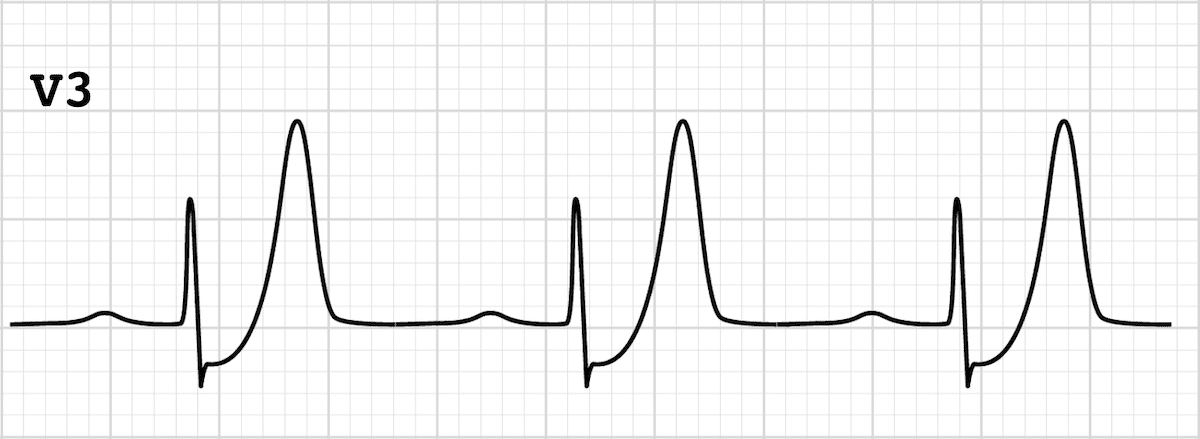
De Winter T Wave Litfl Ecg Library Diagnosis
1 The ECG reveals a de Winters pattern which shows a 1 to 3 mm upsloping ST.
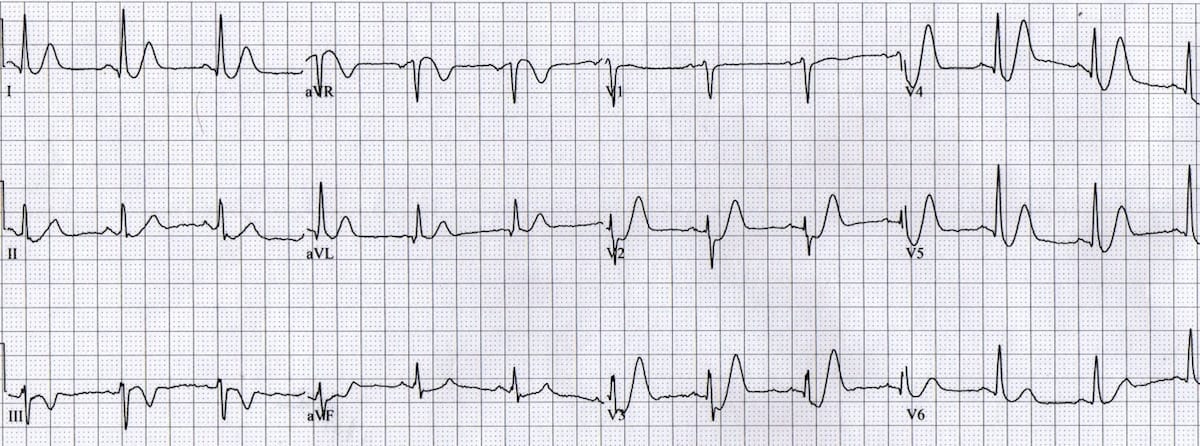
. The De Winter ECG pattern has been reported to indicate acute left anterior descending coronary artery occlusion and is often considered to be an ST elevation myocardial infarction STEMI equivalent. 1 ST-segment elevation myocardial infarction STEMI equivalent patterns make the diagnosis of STEMI very challenging. Very slight 05-1mm ST elevation in lead aVR.
It may or may not also have subtle ST-segment elevation in aVR. 1 The previous view was that the de Winter ECG pattern is static. These patients are suffering occlusion myocardial infarction OMI and require immediate reperfusion therapy.
We aimed to investigate the morphology of the De Winter ECG pattern and evaluate the test characteristics of the De Winter pattern for the diagnosis of acute coronary occlusion. De Winter Rd et al A new sign of proximal lad occlusion NEJM 2008359. Optimizing electrocardiogram interpretation and clinical decision-making for acute ST-elevation myocardial infarction.
Recall that T-waves should not exceed 10 mm in chest leads and 5 mm in limb leads. T waves associated with De Winters are often referred to as being. The distinct ECG pattern was identified in approximately 2 of patients with LAD stenosis in that study also.
ECG characteristics of De Winters T waves include. The de Winter sign is a rare electrocardiogram ECG manifestation of proximal LAD occlusion. Besides the morphology of upsloping or nonupsloping ST depression STD may have different significance of severity and prognostication.
Since they are short-lived it is uncommon to encounter them in clinical practice. Rokos I et al. More than 1mm of ST depression in the precordial leads.
We show that STsegment elevation myocardial. We aimed to investigate the morphology of the De Winter ECG pattern and evaluate the test characteristics of the De Winter pattern for the diagnosis of acute coronary occlusion. De winter syndrome is a rare pattern that can occur on an electrocardiogram ECG.
The reported positive predictive value PPV for the de Winter ECG pattern to predict an acute left anterior descending artery LAD lesion is inconsistent. De Winter in 2008 the de Winter ECG pattern is an anterior STEMI equivalent that presents without obvious ST segment elevation. First reported by Dutch Professor of Cardiology Robbert J.
Tall often very prominent T waves in the precordial leads. The De Winter ECG pattern has been reported to indicate acute left anterior descending coronary artery occlusion and is often considered to be an ST elevation myocardial infarction STEMI equivalent. It has become increasingly recognized as an STsegment elevation myocardial infarction equivalent pattern due to proximal left anterior descending pLAD artery occlusion.
These patients were more likely to be younger and male and tended to have hypercholesterolaemia. Appropriate cardiac cath lab activation. De Winter R et al.
We aimed to investigate the morphology of the De Winter ECG pattern and evaluate the test characteristics of the De Winter pattern for the diagnosis of acute coronary occlusion. A new ECG sign of proximal LAD occlusion. The de Winter electrocardiogram pattern is a transient electrocardiographic phenomenon that presents at early stage of ST-segment elevation myocardial infarction Clin Cardiol 41 2018 pp.
The De Winter ECG pattern has been reported to indicate acute left anterior descending coronary artery occlusion and is often considered to be an ST elevation myocardial infarction STEMI equivalent. Upsloping ST-segment depression with tall prominent symmetrical T-waves in the precordial leads. De Winters sign persistent hyperacute T-wave syndrome As mentioned above hyperacute T-waves have a short duration.
Hence hyperacute T-waves are the first ECG change in STE-ACSSTEMI. This pattern should be treated as being equivalent to an anterior STEMI. In 2008 de Winter et al described an ECG pattern suggesting that it should be considered an ST-elevation myocardial infarction STEMI equivalent de Winter Verouden Wellens Wilde 2008 with the potential to predict critical stenosis or occlusion of the left anterior descending coronary artery LAD.
De Winter St T Waves Ecg Medical Training
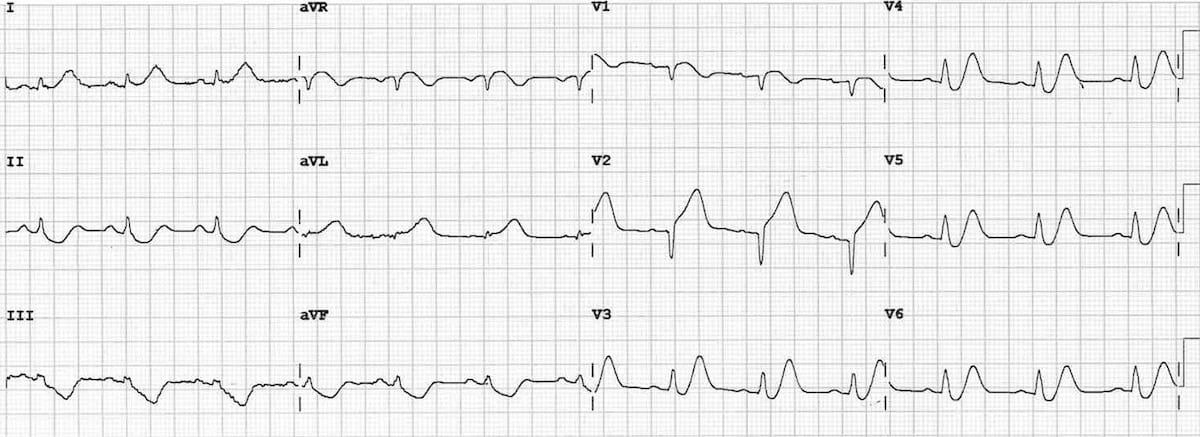
De Winter T Wave Litfl Ecg Library Diagnosis
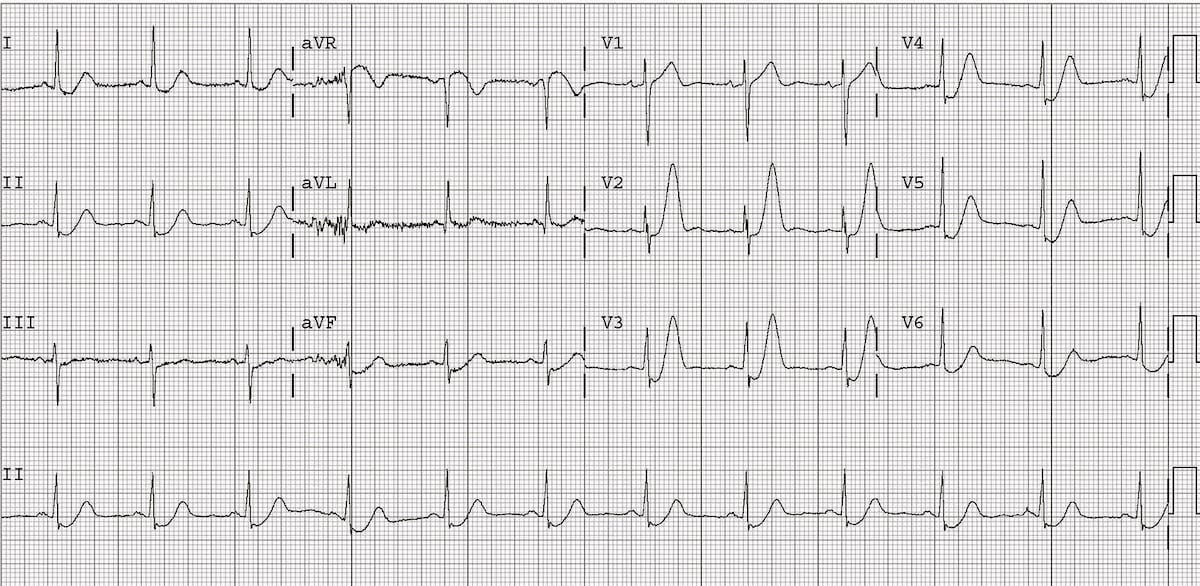
De Winter T Wave Litfl Ecg Library Diagnosis
De Winter St T Waves Ecg Medical Training
De Winter St T Waves Ecg Medical Training
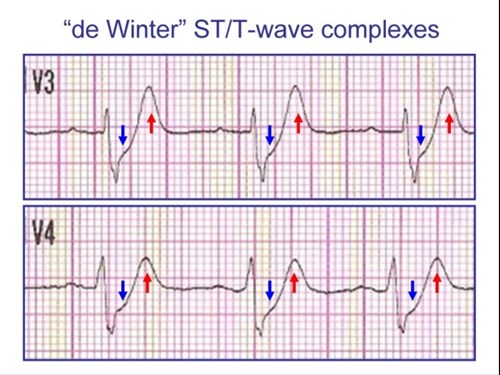

0 comments
Post a Comment